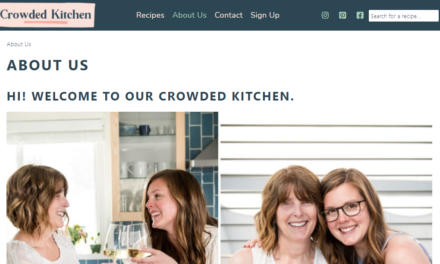Since the internet first started permeating our culture and dictating new technological trends, it’s been heralded as the indistinct, indefinite “future” of advertising. Traditional ad paths, like billboards, radio ads, and printed ads in magazines, saw a slow and steady decline as more companies ventured to the digital world to gain more exposure as “modernized” brands. Traditional ads are still very much alive, but the digital era is definitely here.
The challenge we face now is one we didn’t predict; digital ads may have been the future, but a finite one rather than the semi-permanent “forever” future we collectively envisioned. Now, digital publishing is facing some major hurdles when it comes to growth, and online news portals are starting to see similar declines as their printed counterparts.
So what does this mean for the future of digital advertising? It seems strange to think it may one day die, but there will definitely be some hurdles to its development in the near future:
- Significant Uses of Data–There’s no question that we live in a golden age of big data. Companies like Google and Facebook have dedicated years to collecting in-depth data on individuals and group demographics, all for the savvy marketer to employ in his/her own campaigns. This sounds good; after all, the more data you have to inform a decision the better, right? Only if you know what that data means. Today, we have the technology to gather and present all this data for marketers, but technology is still limited when it comes to interpreting and meaningfully using this data. Until we figure that out, too much data may actually be more overwhelming than it is helpful (especially to inexperienced marketers).
- Limited Competition–With news outlets beginning to see decreased market share and rogue social media platforms starting to die off in favor of bigger, aggregated platforms, digital advertising is starting to become a survival-of-the-fittest test in which only a handful will eventually survive. Currently, Google and Facebook lead the way both in terms of ad targeting sophistication and in terms of overall spend. Soon, it may be nearly impossible for any new company to catch them. Less competition means less variety, and we may soon face problems of monopolization.
- Automation–It’s no secret that companies are starting to use AI for creative tasks, such as writing simple journalistic articles. How long before similar programs are able to write compelling ad copy for digital advertisers? Automation is a nice thought for marketers tired of putting in long hours and exhaustive efforts, but over-automation could lead to stagnation in the industry. How long before consumers are able to figure out the “robot” game and start filtering out all ads as white noise? In the short term, automation will be a boon to the advertising industry, but in the long term, it could sabotage the game.
- Ad Blockers–Forget filtering ads as white noise. Consumers can literally filter ads. Ad blocker apps, plugins, and filters are readily available for nearly every browser and nearly any device. Any user with a few extra minutes and an ability to run a basic Google search can quickly install an ad blocker. You might argue that soon, digital advertisers will find a more subtle way of advertising that circumvents these ad-block filters, but ad blocking companies will soon find a way to circumvent these new, subversive techniques? Most consumers will claim that they don’t enjoy advertising, and will go out of their way to avoid it when possible. In a world where everyone can (and everyone wants to) avoid advertising, what are advertisers to do?
- Organic Marketing–It bears repeating: consumers hate advertisements. If users feel like they’re being sold to, they’re going to stop listening to your message. They skip ads, close popups, and run blocks to prevent themselves from accidentally seeing any intentionally marketed material. It comes across as insincere and untrustworthy, and as a result, more people are looking to individuals instead of corporations, and to well-written, unbiased content rather than targeted ads, for information. Organic marketing, leveraging the power of content, personal brands, social media, and other inbound outlets, are seeing higher ROI and greater levels of consumer trust as a result. In this way, advertising—not just digital—might eventually fade away as a significant means of generating additional revenue. In the short-term, organic marketing and digital advertising are two complements with inherent advantages and disadvantages, but as consumer distrust for ads and corporations grows, who knows what’s next for the marketing scene?
It’s premature to imply that digital advertising will eventually fade away. After all, traditional advertising isn’t dead—at least not yet! It’s in significant decline, but it’s still around, and still producing meaningful ROI for many companies using it. Digital ad spend is still consistently increasing, and we can look forward to many more years of digital ad growth. However, these aforementioned challenges will soon begin to shape the future of the advertising world.






